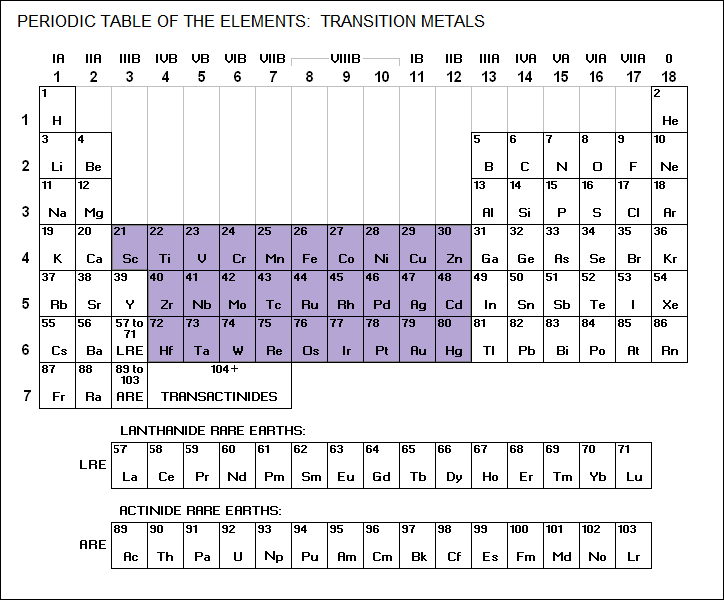
* Zinc is a member of the transition metals family:

____________________________________________________________________
ZINC / Zn / 30
A bluish-white, moderately reactive metal. Five isotopes occur
in nature:
Zn<64/30> / 49%
Zn<66/30> / 28%
Zn<68/30> / 19%
Zn<67/30> / 4%
Zn<70/30> / 0.6%
All are stable.
atomic weight: 65.38
abundance: 24th
density: 7.133 gm/cc
melting point: 420 C
boiling point: 907 C
valence: 2
____________________________________________________________________
Zinc is a required dietary component, though too much is dangerously toxic. Millions of tonnes of zinc are produced each year, mostly from smithsonite, an ore based on zinc carbonate (ZnCO3), and sphalarite, an ore based on zinc sulfide (ZnS). It is used for plating steel to make it corrosion-resistant, in fabricating diecast components, as an electrode element in some types of electric batteries, as an alloying element, and as zinc oxide (ZnO) a pigment in plastics -- incidentally improving the plastic's resistance to ultraviolet. Zinc oxide was once commonly used in paints, but it has generally been replaced by titanium dioxide; it is also used in ointments and lotions, such as cooling calamine lotion, and in sunblock lotions to prevent sunburn.
